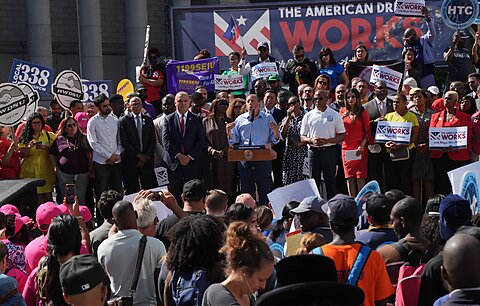
Jeffrey Miron
This article appeared on Substack on September 22, 2023.
The White House recently announced the granting of Temporary Protected Status (TPS) to Venezuelans who arrived in the US before July 31st, a special designation allowing them to stay and work for 18 months.
The announcement comes in large part as a reaction to the tens of thousands of migrants currently overwhelming New York City’s taxpayers, who have been paying $8 million a day to house asylum seekers.
The root of the problem is a provision of a 1996 immigration bill that requires asylum seekers to wait 180 days before receiving work authorization. This provision was likely meant as a deterrent to migration, but that is not happening.
Unfortunately, TPS may not resolve the problem because the current processing time for immigrant work visas is around 10 to 18 months. A real solution, changing the 1996 law, would require congressional legislation at a time when neither party is willing to touch immigration reform. The Biden administration is trying to shorten wait times for visas, but that attempt faces political and practical difficulties.
Given the choice, most asylum seekers would jump at a chance to work and would have no trouble finding jobs. The increased labor pool would be an economic boon to the city. Instead, under current policy, the immigrants that do find work illegally have to participate in an underground market subject to exploitation and abuse.
In short, we have a textbook situation where a prohibition on labor supply causes shortages, black markets, and losses for both business and labor. That New York City taxpayers have to pay millions to support these immigrants is ironic given that immigrants are normally a net fiscal gain, provided they are allowed to work.
TPS may ease the problem eventually, but more fundamental reform—legalization of more immigration—is a far better approach.






